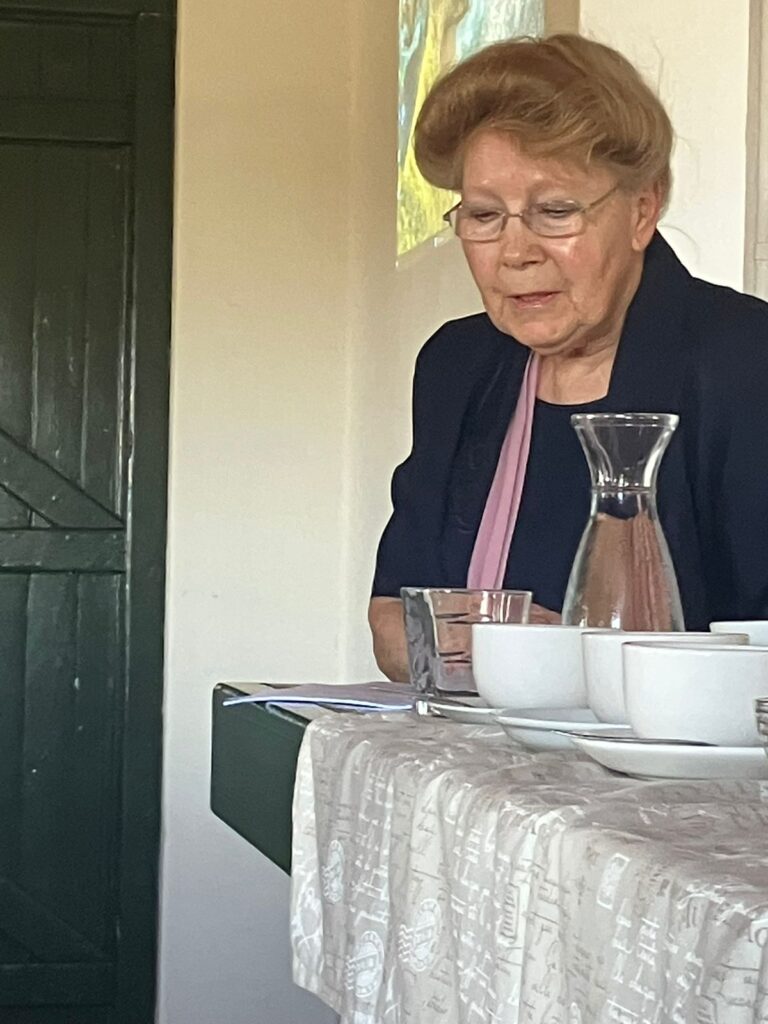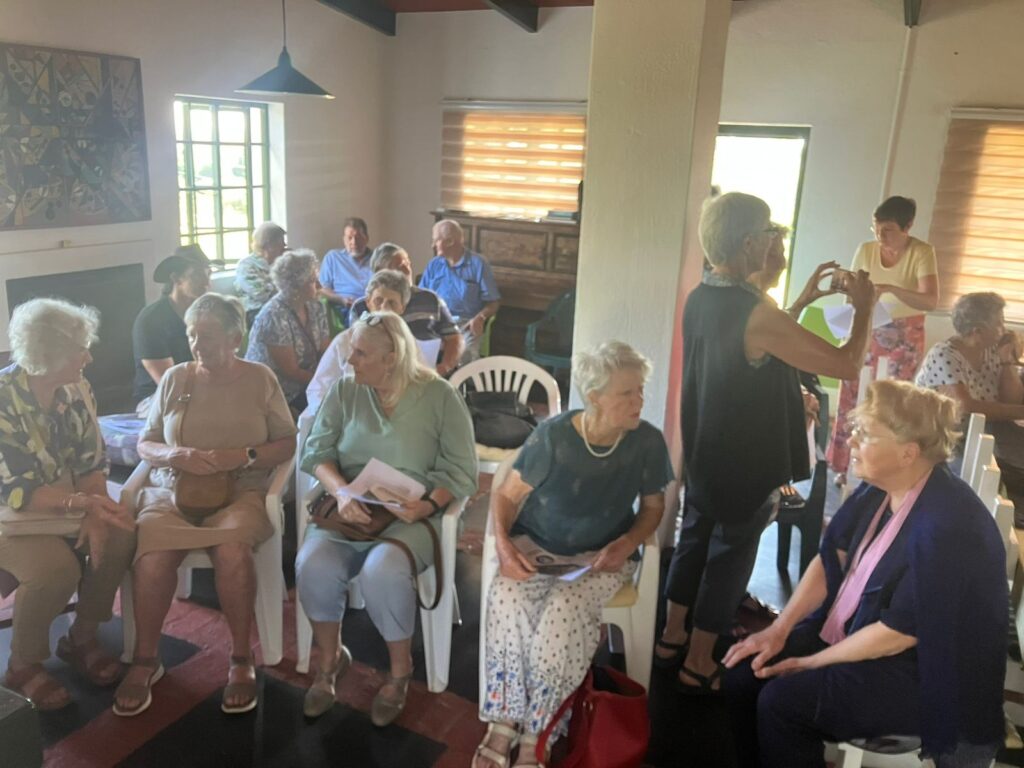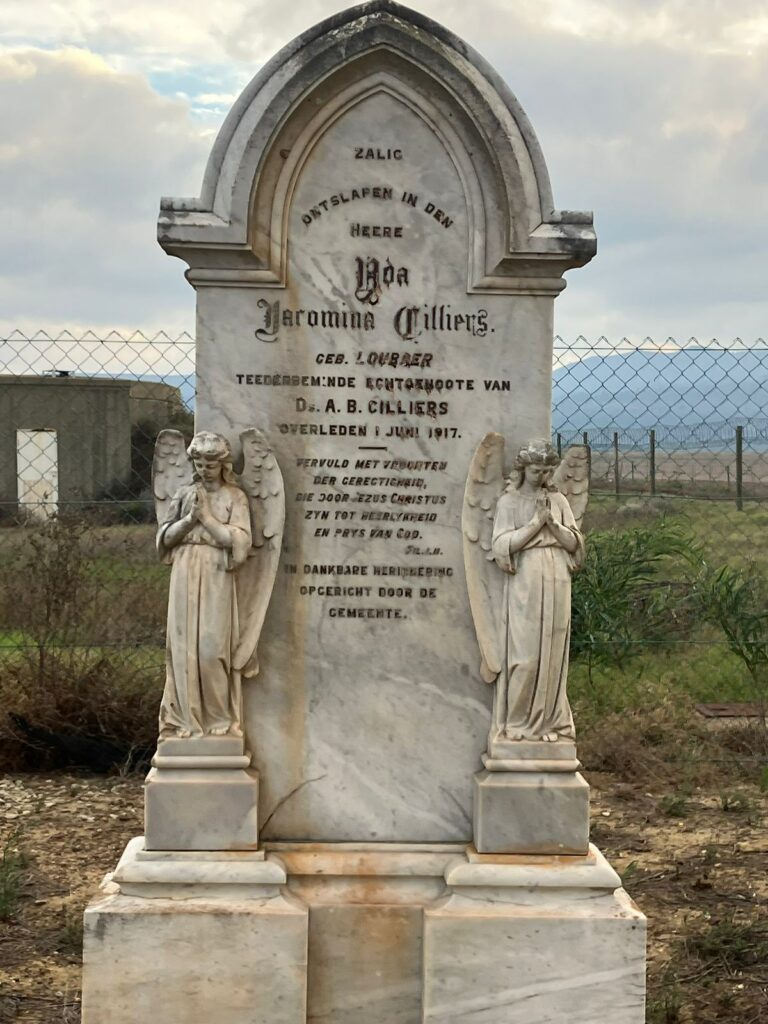
Registered Heritage Body HM/CB/28-02-2020/03
NPO 272-966
Protecting Napier’s cultural and natural heritage

The NHCB held its third members’ event for the year on Saturday, 29 March, with Dr Helena Liebenberg of the Tracing History Trust (THT) as the speaker of the day. The talk centred on the interesting pieces of Overberg history, its people and places uncovered as part of her work with the Trust.
Dr Liebenberg and her team have already transcribed, edited and digitised many of the Dutch East India Company’s handwritten journals and other documents held at the Cape Archives as well as the Dutch National Archive in The Hague as part of their ongoing “Kaapse VOC Daghregister” project. Documents include some of the muster rolls, auction registers, death registers, ship’s registers and slave registers kept by the Dutch East India Company from the 17th to the 19th century. The digitised information provides an invaluable, accessible tool for students, researchers and those interested in local history or genealogy alike.
Dr Liebenberg provided fascinating insights into the work of the THT, a non-profit organisation established in 2008 to promote and undertake the recording, dissemination, and research of historical resources, with a particular focus on the recent history of South Africa and its connections to the African continent and the wider world.
As part of her talk, Dr Liebenberg touched on the ancestral history behind a few familiar Overberg family names, such as Blom, Giliomee and Uys, which can be found in these archival records. She also spoke about how remnants of the local Khoisan languages are embedded in many of our local place names, such as Kars River, Kykoedie and Komassie, and how they can also be traced back in the archival records.
After the talk, members had an opportunity to ask her questions and to share their family history and research. NHCB member Elsette Strachan shared some of the difficulties of tracing the origins of slave ancestors, a project which she and a few older members of the Napier community have been involved in for the past few years.
Dr Liebenberg and her team have already transcribed, edited and digitised many of the Dutch East India Company’s handwritten journals and other documents held at the Cape Archives as well as the Dutch National Archive in The Hague as part of their ongoing “Kaapse VOC Daghregister” project. Documents include some of the muster rolls, auction registers, death registers, ship’s registers and slave registers kept by the Dutch East India Company from the 17th to the 19th century. The digitised information provides an invaluable, accessible tool for students, researchers and those interested in local history or genealogy alike.
Dr Liebenberg provided fascinating insights into the work of the THT, a non-profit organisation established in 2008 to promote and undertake the recording, dissemination, and research of historical resources, with a particular focus on the recent history of South Africa and its connections to the African continent and the wider world.
After the talk, NHCB member Ina Georgala appealed to all those present to help preserve local and family history by helping to digitise old family photographs and documents for display in the NHCB’s planned virtual museum. “I was struck by something a friend of mine said recently, namely that all of us living in the digital age will not have a physical likeness left behind like many of our ancestors. In 100 years from now, no one will know what we looked like, because there will not be a photograph or a portrait of us, despite the thousands, if not millions, of images we load to the cloud every year.”
She also mentioned how sad it was that many family photographs end up in landfills, the curiosity drawers of second-hand or antique shops. “If you do any family research, you know how invaluable it can be to have an image of an ancestor. On the most basic level, it is always good to know whose ears and nose you inherited!”
After the talk, NHCB member Ina Georgala appealed to all those present to help preserve local and family history by helping to digitise old family photographs and documents for display in the NHCB’s planned virtual museum. “I was struck by something a friend of mine said recently, namely that all of us living in the digital age will not have a physical likeness left behind like many of our ancestors. In 100 years from now, no one will know what we looked like, because there will not be a photograph or a portrait of us, despite the thousands, if not millions, of images we load to the cloud every year.”
She also mentioned how sad it was that many family photographs end up in landfills or the curiosity drawers of second-hand or antique shops. “If you do any family research, you know how invaluable it can be to have an image of an ancestor. On the most basic level, it is always good to know whose ears and nose you inherited!”

Georgala mentioned how burial records in cemeteries and memorial walls are becoming scarce, as many people are cremated and their ash scattered with no memorial remaining behind. “This is one of the reasons why we need to look after our historic cemeteries, such as the four cemeteries we have here in Napier. Our cemeteries are slowly being degraded and vandalized to such a extent that those who come after us will barely have any record left to see.”
After Dr Liebenberg’s talk, a small group also visited the historical Dutch Reformed Church graveyard, where they could trace the gravestones of some of the people behind Napier’s street names such as Wessels, De Bruyn, Almond, Kuys, Geldenhuys and Cilliers. The visitors were all distressed by the level of vandalism they could see – all of which could have a dire impact on future genealogical research.

If you have any historical documents, photos or stories of the residents and the town throughout its history, please don’t hesitate to contact us via email using the button below.
Thank you to all our sponsors.